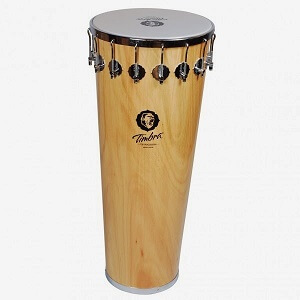Timbal
 The timbales, of Afro-Cuban descent, have become a ubiquitous instrument in percussion set-ups used in nearly every kind of popular western music, from Salsa to Pop, Funk, and Rock’n’Roll. Whether you’re just getting started learning how to play the timbales, taking timbale lessons, or you’re a seasoned pro, it’s a must to have a general idea of the the history of the instrument.
The timbales, of Afro-Cuban descent, have become a ubiquitous instrument in percussion set-ups used in nearly every kind of popular western music, from Salsa to Pop, Funk, and Rock’n’Roll. Whether you’re just getting started learning how to play the timbales, taking timbale lessons, or you’re a seasoned pro, it’s a must to have a general idea of the the history of the instrument.
The Timbales or Timbal, also known as “paila” and “paila criolla,” evolved in Cuba in the late 19th century. They are the descendants of the European Timpani, or kettle drums, more specifically those that were brought over by Italian opera companies, and were used to accompany wind ensembles and military parade bands in colonial Cuba. The “paila criolla” evolved as a lighter and more portable alternative to the large and cumbersome kettle drums, perfect for marching and parading. These early timbales were made from iron or copper containers which were found in many of the sugar cane factories around the island.
The modern timbal includes two drums, the smaller “macho” drum, usually between 13”-15” and the larger hembra, which is between 14”-16.” The shells of these drums are typically made from different metals ranging from bronze, brass, and steel and use 6-8 tension rods to secure a plastic head in place. Nowadays there are also timbales made of wood, but they lack the brightness in sound that is synonymous with the timbales, especially in the shells or “cascara.” It’s important to note that earlier timbal models used calf heads, which of course were very susceptible to weather changes and far more difficult to tune to higher pitches.